
Brampton’s transformative Riverwalk plan could radically improve the city’s fortunes
The City of Brampton is hoping access to a beautiful natural water feature through its downtown will help lift the flagging fortunes of the area.
Proposals are being crafted to address numerous concerns including transit service, job creation, economic development and educational opportunities. A centerpiece of the badly needed revitalization of the city’s aging downtown core is Etobicoke Creek.
The city centre of the country’s ninth largest municipality should be crawling with pedestrians, surrounded by highrises, and dotted with unique shops, boutiques and galleries. Brampton’s is pocked by boarded-up storefronts, decaying buildings and empty sidewalks.
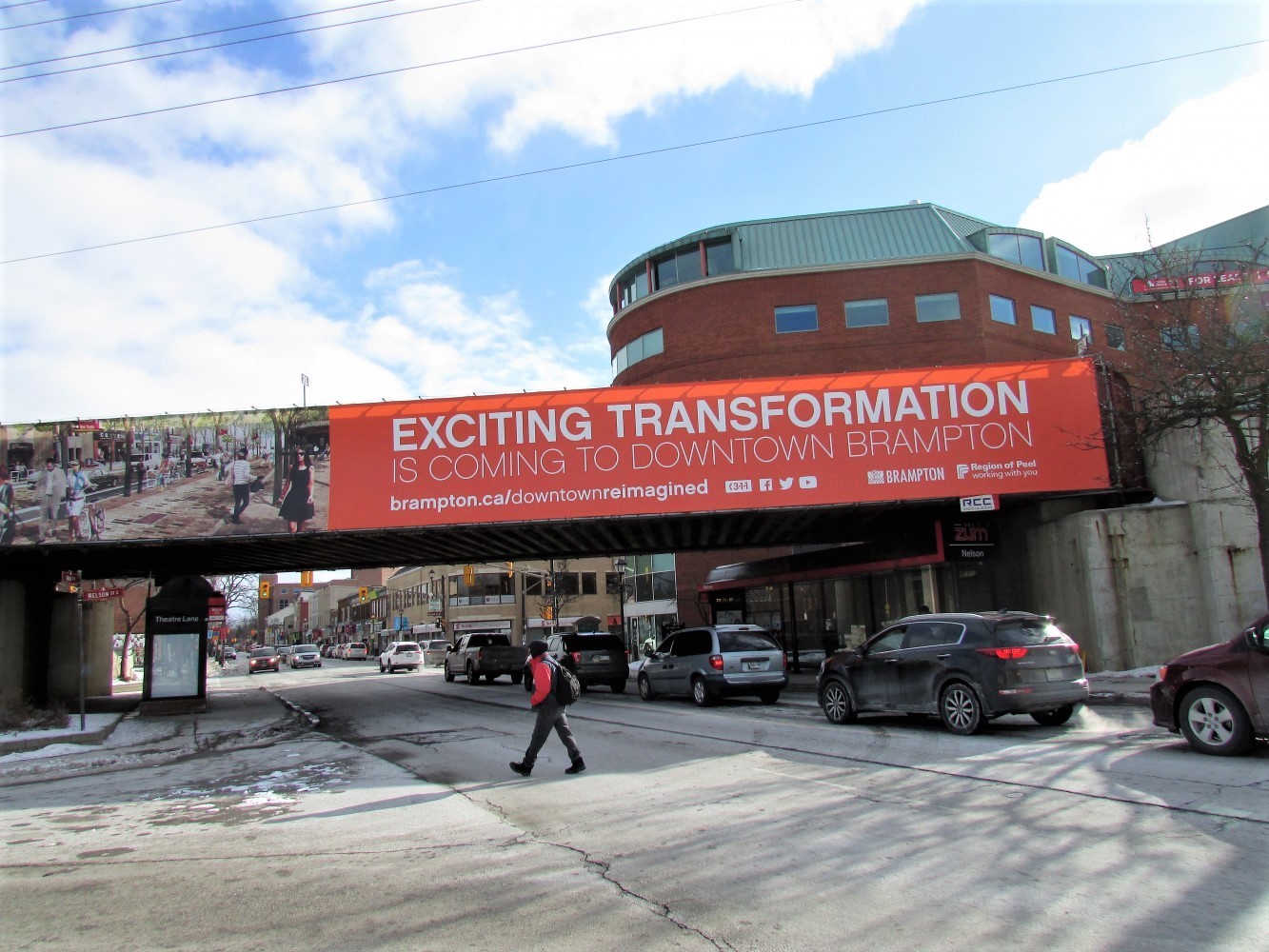
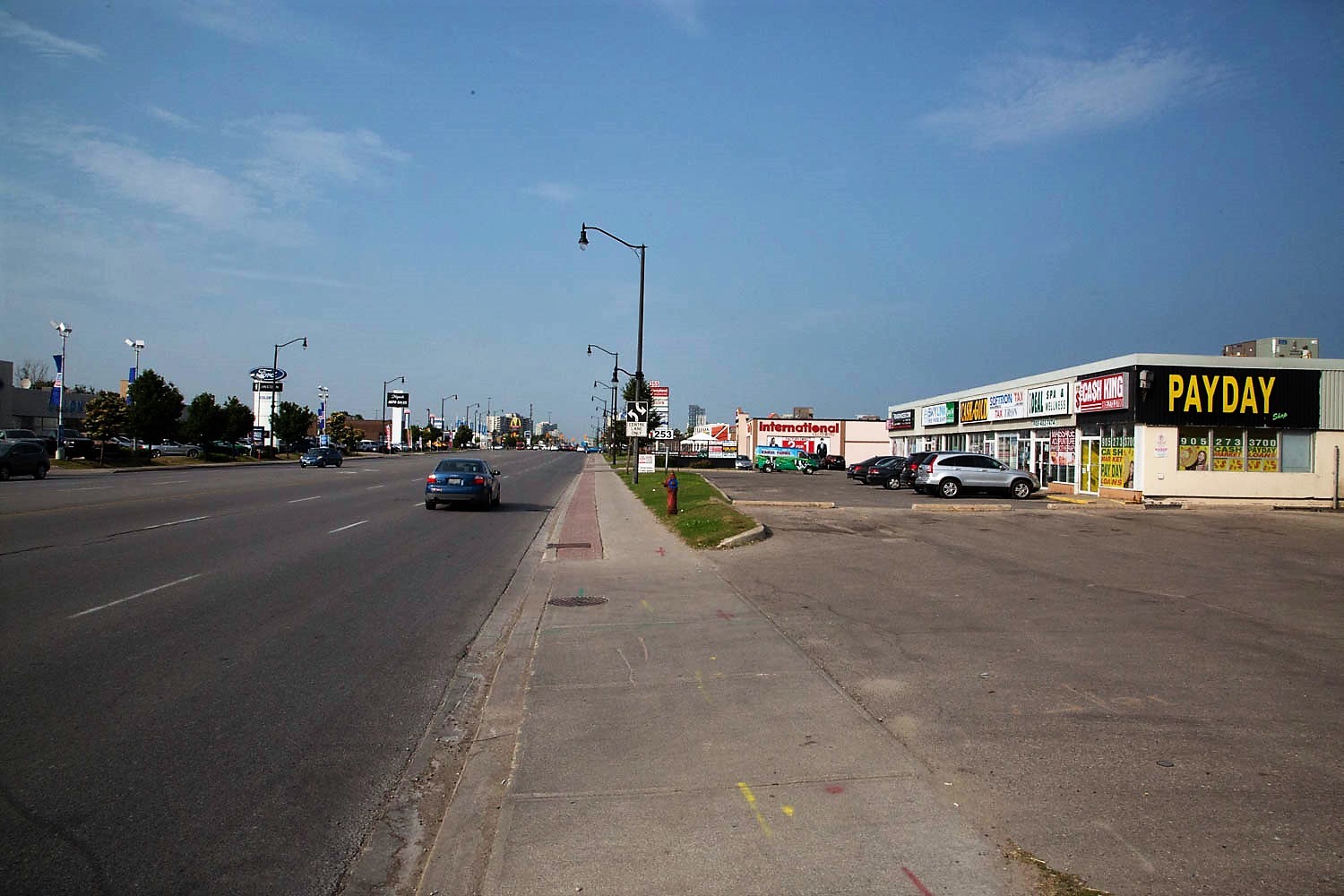
Despite the promise of an "Exciting Transformation" for years, Brampton's city centre remains in decline
The few pedestrians are met with a growing inventory of empty retail locations. Signs advertising “everything must go” in large bright letters have become common. Business owners have been promised change since Patrick Brown became mayor, and their pleas were voiced long before. He has done the opposite, demanding tax freezes that have halted planned investments in the downtown.
Etobicoke Creek represents the most significant challenge for the area.
Under extreme weather events, the creek runs the risk of overflowing, causing major flooding throughout the downtown core. The worst recorded flood occurred in 1948 when six feet of water turned Main Street and Queen Street into a lake. Four years later the construction of a bypass channel was completed to provide flood protection which helped the city when Hurricane Hazel arrived shortly after.
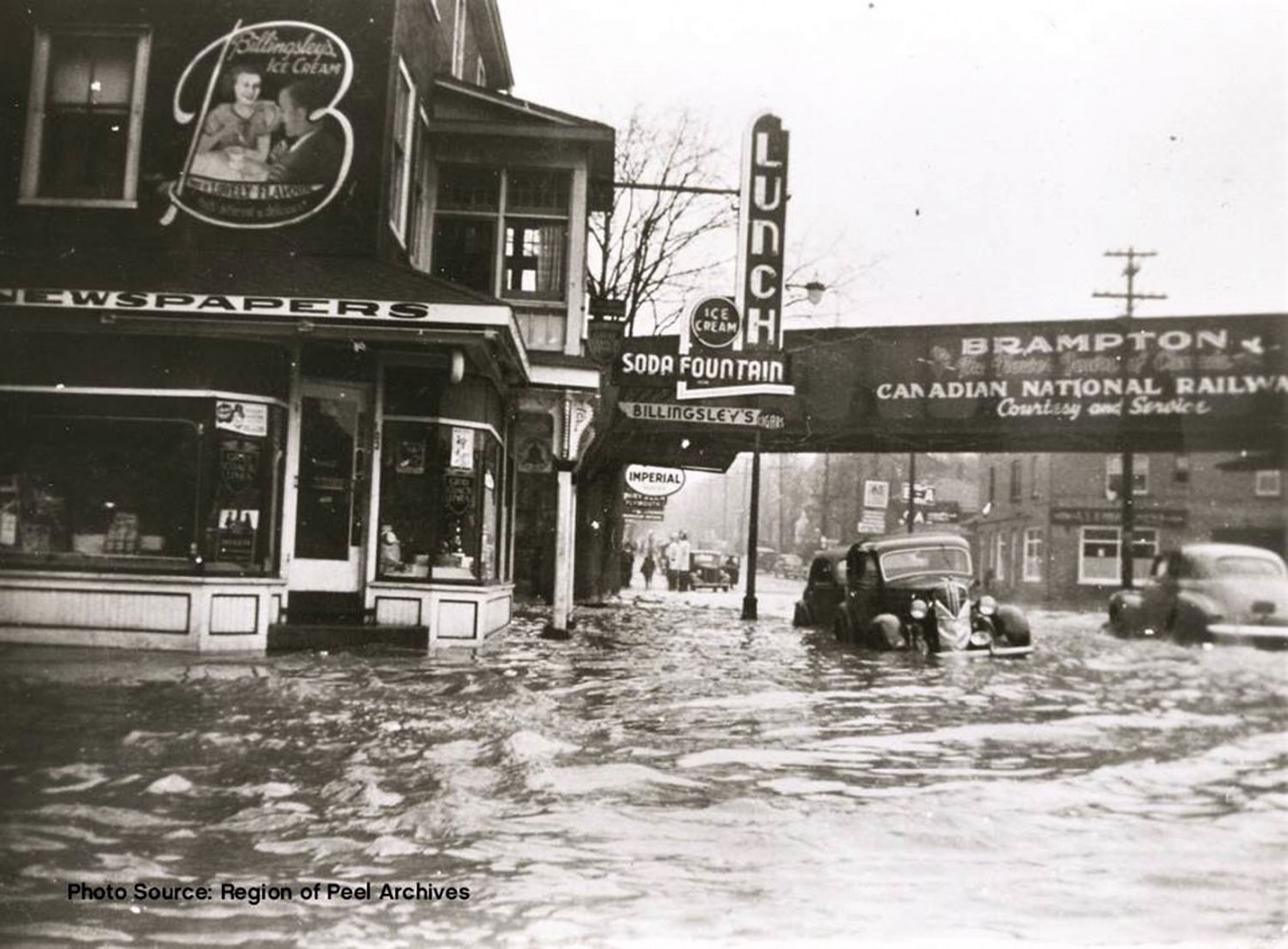
Downtown Brampton during the 1948 flood
In an effort to highlight the need for flood mitigation, the Province dotted Ontario with Special Policy Area (SPA) designations. Brampton was not spared. Developing in SPAs is almost impossible because the risk of flooding makes it hard to bypass strict protocols that would allow construction.
The City has been trying to shake this designation by developing the Riverwalk project and mitigating the flood risk at the same time.
In September, the Ministry of Environment, Conservation, and Parks approved an environmental assessment (EA) by the Toronto and Region Conservation Authority that outlines how Etobicoke Creek could be supported through a major engineering project to prevent flooding, as part of the Downtown Brampton Flood Protection Project.
This major element of the Riverwalk plan will involve widening and deepening the channel, making bridges bigger, and adding extra floodplain storage, as outlined in the EA. This approval allows 19 of the 31 hectares under SPA to be removed, so downtown can finally get much needed investment to transform from its withering state.
Many cities around the world have been completely transformed through major redevelopments of existing waterways. San Antonio’s famous River Walk has been redeveloped since the ‘40s, and it’s beautiful mix of natural water features, green spaces and commercial attractions have become the city’s number one draw, making it a major destination for tourists.
Its River Walk has promenades, rows of restaurants and cafes and hosts major events throughout the year. It’s just one example of how existing waterways can be used to completely transform formerly forgotten urban corridors.
San Antonio's River Walk
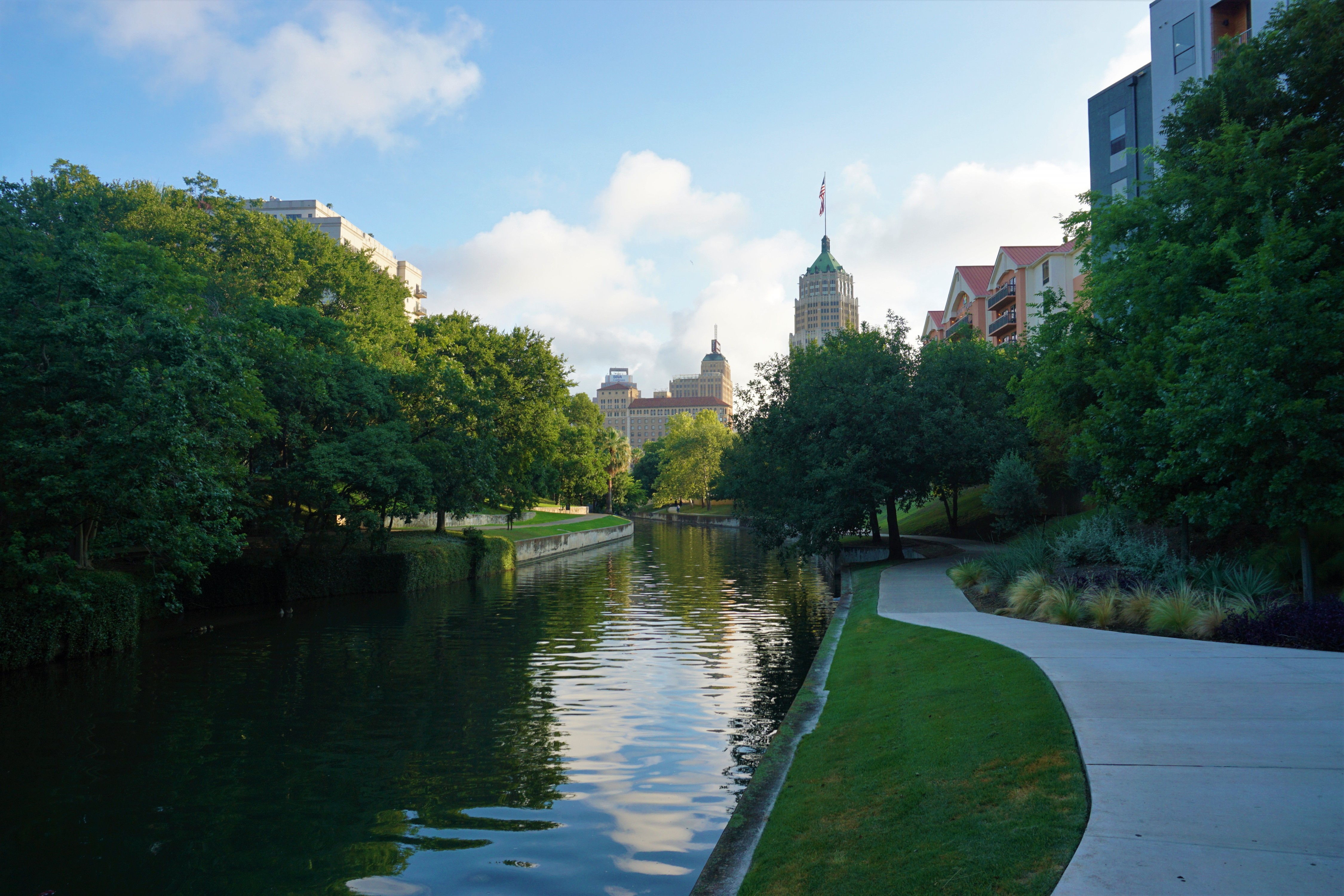
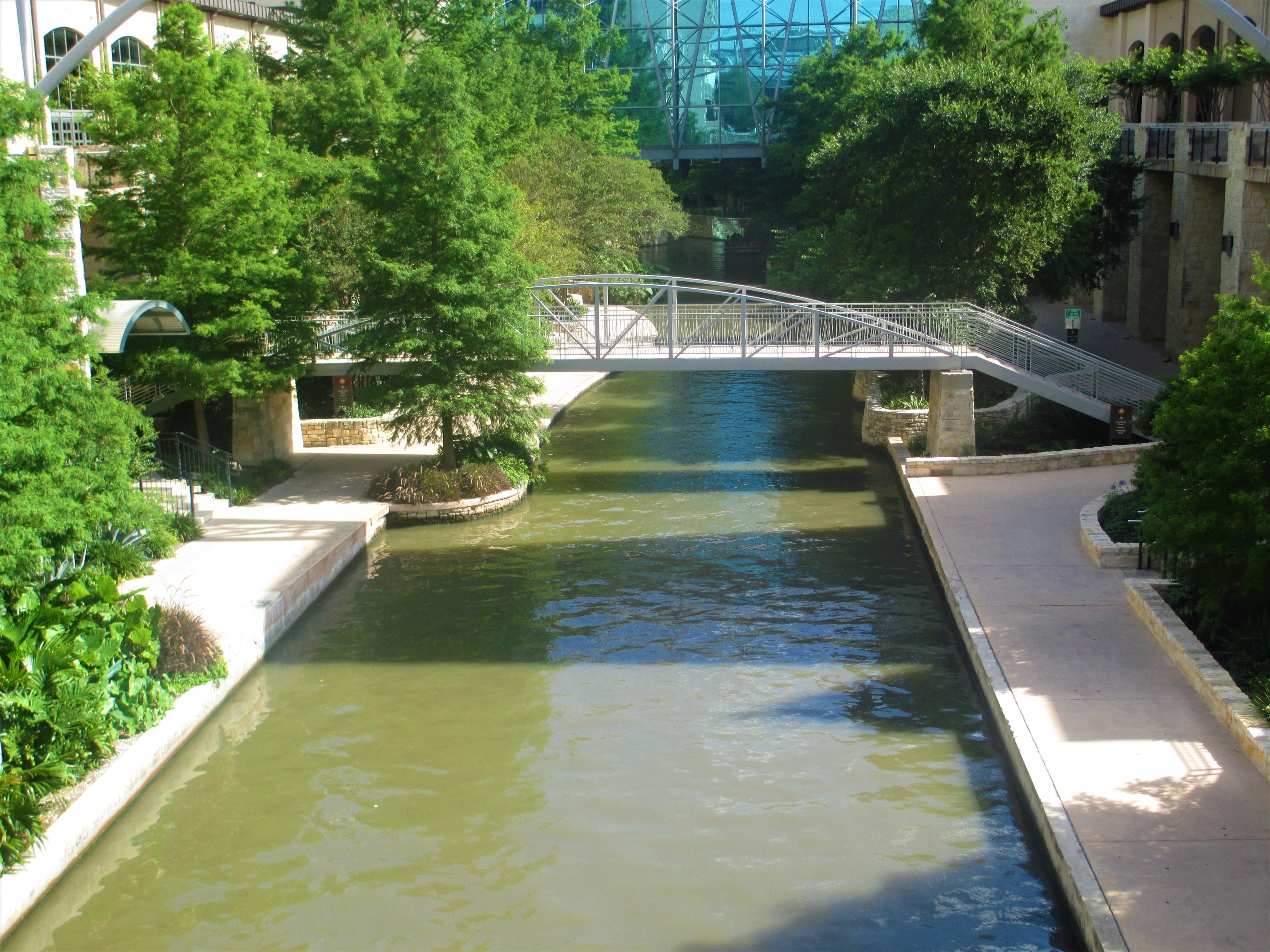
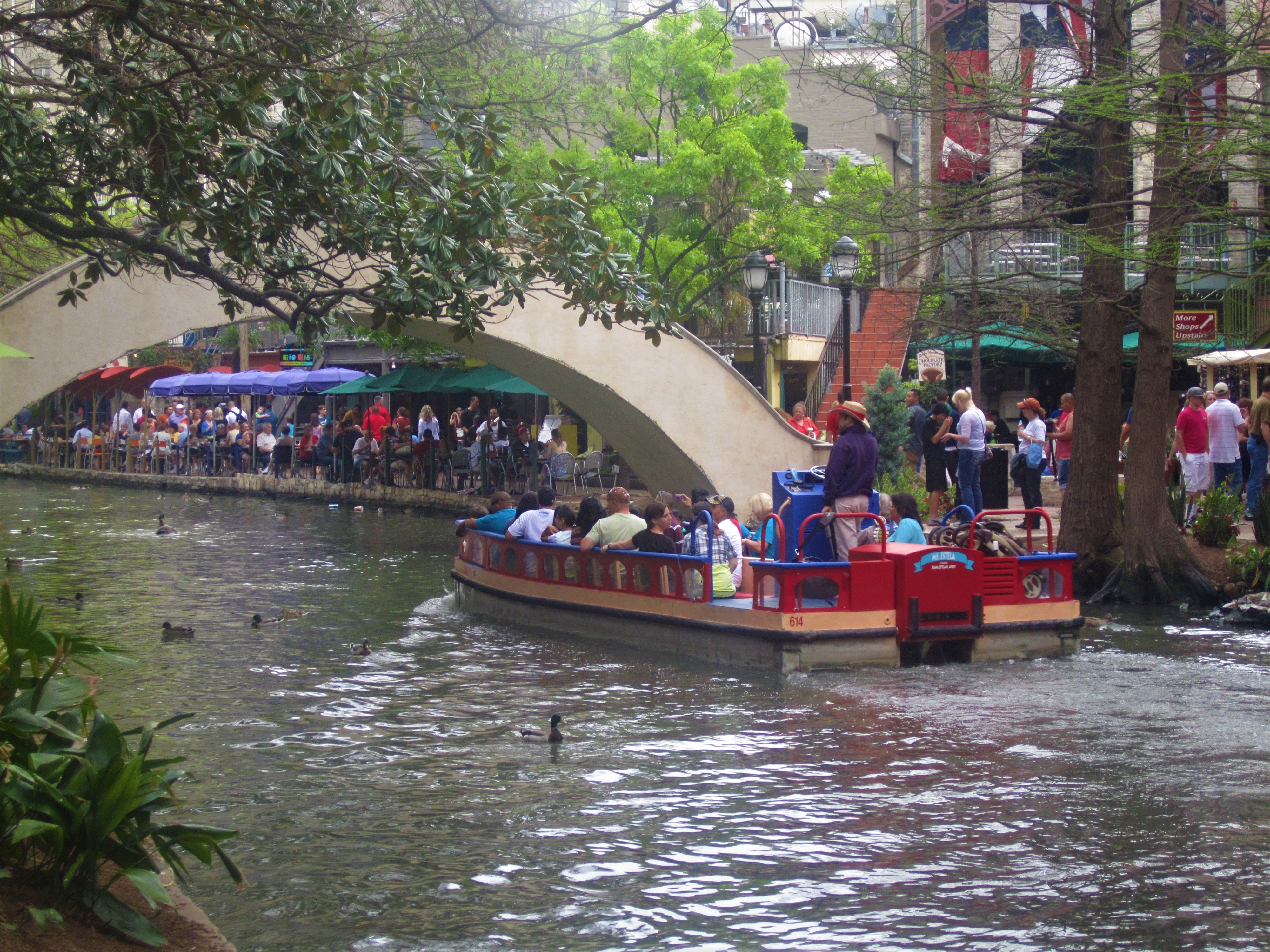

“At its core, [Riverwalk] is about removing barriers, enhancing public safety, and really laying the groundwork for an urban transformation that will create an iconic identity for downtown Brampton,” Michael Heralall, senior manager of environment in the City’s Environment and Development Engineering department, said during the City’s second public consultation session on the project.
The event provided a draft outline for the Riverwalk Urban Design Master Plan (UDMP). This addresses the design of the open space by the creek and corresponds with findings of the EA.
Four themes (programming, character and identity, sustainable mobility, and environment, resilience, sustainability and public health) represent different features in the UDMP. The City is working with consultants from DTAH, a Toronto based urban design firm, to assist with the details of the project.
Programming to create iconic urban spaces means creating social environments for people to meet, James Roche, a consultant from DTAH said, such as playgrounds and picnic areas. Sustainable mobility puts an emphasis on higher order transit and includes shared streets and pedestrian priority spaces.
The theme of environment and public health, in part, focuses on the EA. Roche said flood mitigation is an important part of the UDMP and the design team has worked closely with those who put together the EA.
Character and identity focus on the overall feel of the area and should incorporate cultural expressions and inspirations. There are plans to work with the Peel Art Gallery Museum & Archives to bring public art to the length of the Riverwalk. Roche said opportunities can also be made for temporary public art and installations from local artists to be presented periodically.
These four themes are repeated throughout the five focus areas of the project.
The first area is Duggan Park. Tanya Brown, a consultant with DTAH, said one of the larger aspects of design for this area involves enhancing natural features that are already there. Boardwalks and woodland trails will also be established to allow residents to access the edge of the creek.
Brampton's Riverwalk plan
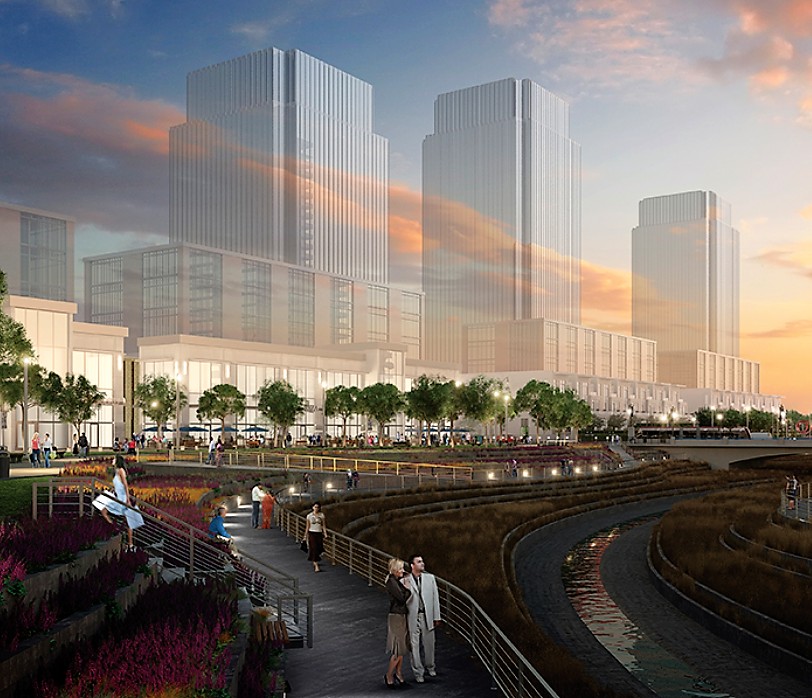
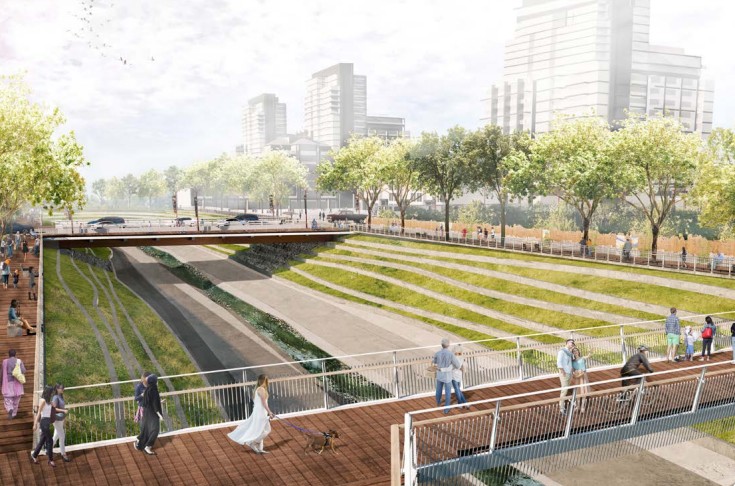
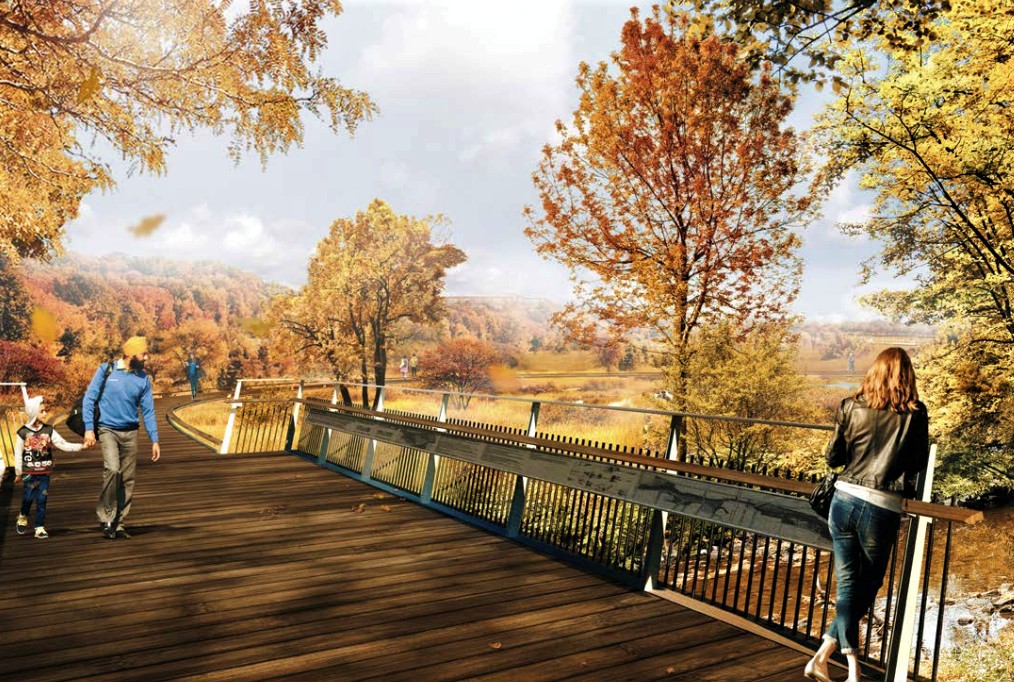
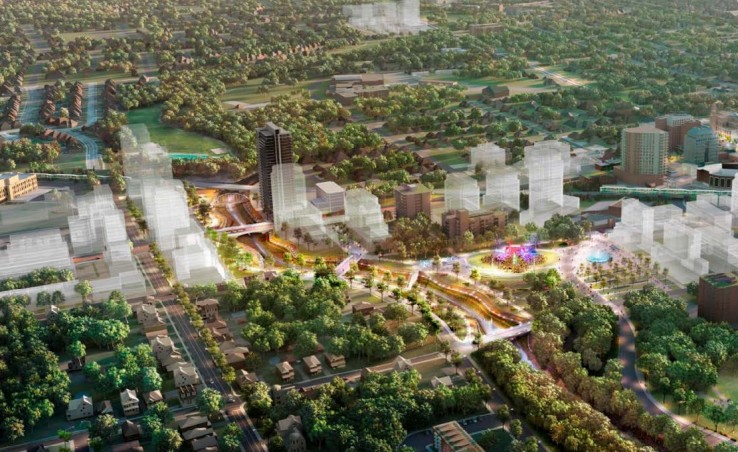
The second area is Rosalea Park North. The design is focusing on the flood protection solution outlined in the EA that calls for the reconfiguration of Ken Whillans Drive to expand the flood plain. If successful, it will allow for a “complete street” to be created to accommodate cars, cyclists, and pedestrians. The space between Ken Whillans Drive and the creek will be regraded and a meadow will be added to allow for the introduction of new species that don't exist in the area. An EA is currently being developed to examine the alignment of Ken Whillans Drive.
Brown says the third area, Rosalea Park, is intended to “become the heart of Riverwalk” and an extension of open spaces downtown. It will feature a new urban plaza, event space, and a connection to the Etobicoke Creek, which does not currently exist. An impressive amphitheater with a stage is also part of the design plans.
Area 4 is the Etobicoke Creek Bypass Channel. It’s nicknamed “a canyon through the city” because it’s where the creek passes Queen Street. The bypass channel will be rehabilitated and the bridge overlooking this will be widened to increase capacity. A pedestrian and cycling bridge will be built on John Street and discussions are happening to introduce a new transit stop at Queen and Centre street. Plans are also being discussed to add a pedestrian connection under the train track so access can be developed between Centennial Park and John Street.
The final area of focus is Centennial Park and many of the major changes are to improve access. “Centennial Park is quite lovely as it is. It’s major failing, I would think, is the lack of options for circulation,” Brown said. The design involves pedestrian bridges, lookout areas, and connections to surrounding facilities. The south end of the park has a wetland and there’s discussion to improve and expand that so a boardwalk can be created.
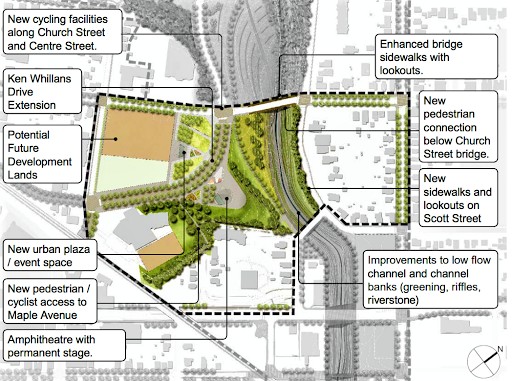
Some of the planned features just north of downtown
It’s unclear what the total cost of the UDMP will be. What’s only known at this time is the flood protection project, just one part of the much larger Riverwalk plan, will cost $107 million, unless delays or increased building costs push the price higher.
Heralall said if everything goes accordingly, construction on the creek should start in 2023 and conclude by 2026. If any problems arise, they hope to wrap things up by 2028. This corresponds with the expiration of $38.8 million the federal government committed for the project in November. This is a fraction of the $107 million it will cost, at a minimum, to put the full flood protection project together.
Mayor Patrick Brown’s refusal to invest local dollars into key city projects planned before his election, aggressively pushing tax freezes and demanding belt tightening instead (despite his own excessive spending on his office and his costs) is a major obstacle to the ambitious Riverwalk plan.
If the full potential of the waterway’s integration into the public life of the city is to be realized, the City will have to make investments Brown has neglected since becoming mayor.
Councillors and business owners have said the failure to invest is shortsighted, as every dollar City Hall puts into the downtown Riverwalk transformation, would bring back much more in property tax revenues, and other private sector investments that would pour into an iconic, major attraction for Brampton, something it currently lacks.
An entire redevelopment of the corridor could cost hundreds of millions of dollars, even more depending on what residents want to see.
At this time, the City is responsible for funding the rest of the project but no details are available on how it plans to accomplish this. A City spokesperson told The Pointer additional funding opportunities will be explored through the Province.
Email: [email protected]
Twitter: @nida_zafar
Tel: 416 890-7643
COVID-19 is impacting all Canadians. At a time when vital public information is needed by everyone, The Pointer has taken down our paywall on all stories relating to the pandemic and those of public interest to ensure every resident of Brampton and Mississauga has access to the facts. For those who are able, we encourage you to consider a subscription. This will help us report on important public interest issues the community needs to know about now more than ever. You can register for a 30-day free trial HERE. Thereafter, The Pointer will charge $10 a month and you can cancel any time right on the website. Thank you.
Submit a correction about this story


